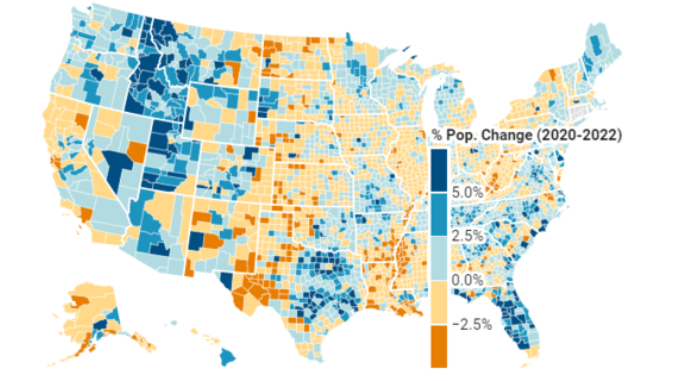Ag Informer – U. of Ill. Study shows Migration during Pandemic

According to a new study from the University of Illinois, two primary factors drive population change–natural change (births minus deaths) and migration (domestic and international). Johnson (2023a) showed that the Great Recession profoundly affected U.S. demographic change over the subsequent decade. Poor economic conditions in many communities froze people in place, which in turn slowed domestic migration in many areas.
Between 2010 and 2020, this was especially pronounced in nonmetro counties that experienced net out-migration and minimal or negative natural increase. As a result, two-thirds of nonmetro counties nationwide lost population during that period.
More recently, the pandemic disrupted these population dynamics and the population in some parts of rural America has rebounded. Recent gains in nonmetro counties resulted primarily from the reversal of domestic migration trends. Despite these gains, the U.S. population only grew 0.5% between 2020 and 2022–the smallest two-year increase in history (Johnson, 2023b).
This growth has been slowed by a significant increase in deaths. In 2022, an estimated 75 percent of U.S. counties had more deaths than births; by comparison, only half of U.S. counties had more deaths than births in the years immediately prior to the pandemic (Johnson, 2023b).
This brief reviews U.S. population trends, and specifically those in the 12 states of the North Central region.[2] Particular focus is given to how these trends vary according to county urban and economic characteristics in the North Central region.
To read the entire report and view an interactive map showing the change by county click here.




